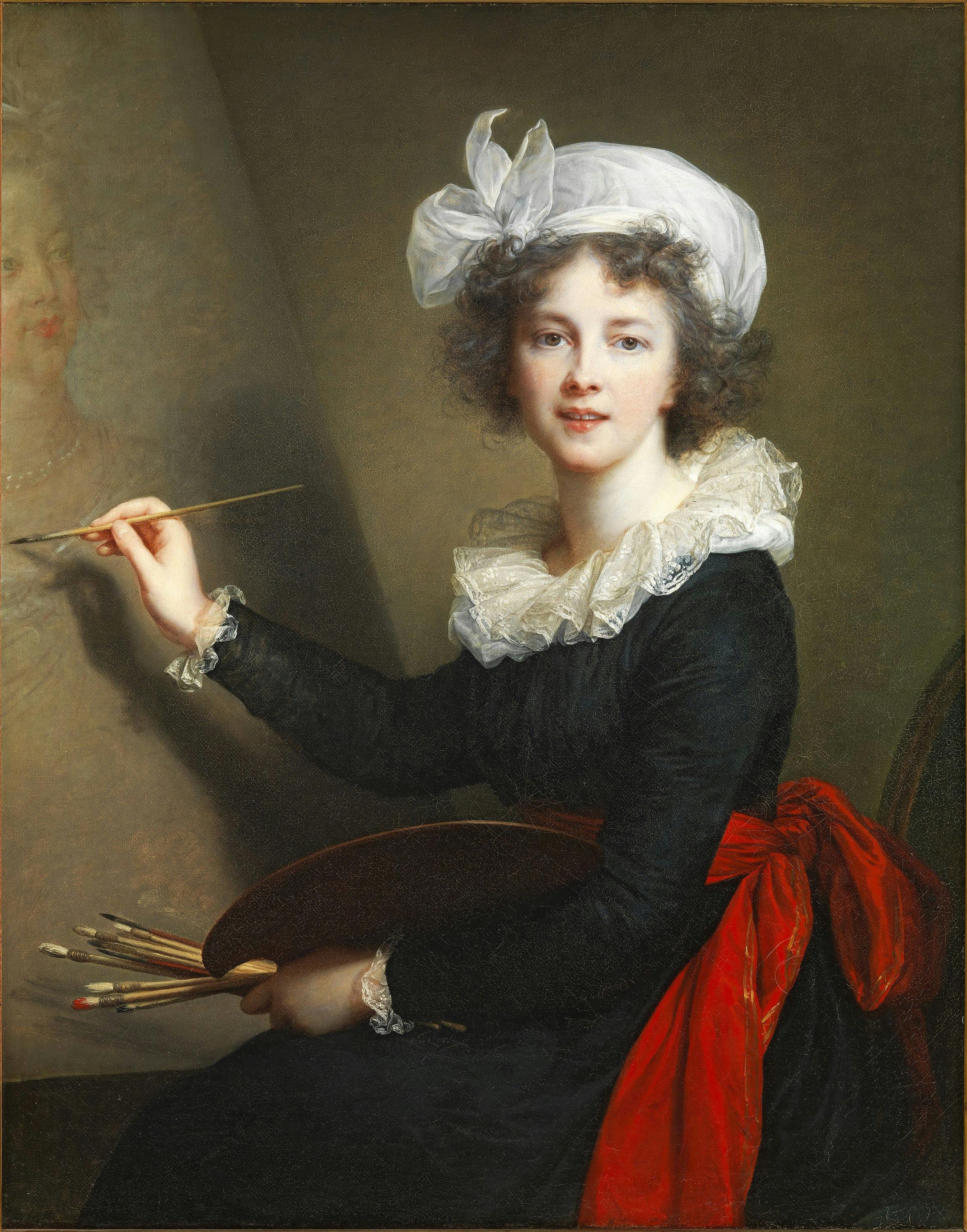Self-portrait
Elisabeth Louise Vigée Le Brun (Paris 1755 – 1842)
Daughter of the painter Louis Vigée, Elisabeth had married the greatest art dealer of the time, Jean-Baptiste-Pierre Le Brun. In 1789 she was at the height of her career, when she left Paris to escape the revolutionary uprisings. She stopped in Florence during her trip to Rome, and visited the Pitti Palace and the Uffizi where she admired the collection of self-portraits that Prince Leopoldo de’ Medici had inaugurated in the 17th century. She was particularly struck by the self-portrait of her contemporary, Swiss painter Angelika Kauffmann, so the director of the Uffizi, Giuseppe Bencivenni Pelli, took the opportunity to ask her to add her own work to the prestigious collection and Elisabeth accepted with enthusiasm.
Once in Rome she worked hard and in one month and half the work was finished: “I have portrayed myself with palette in hand, before a canvas on which I am drawing the queen in white chalk.” The painter had conceived the painting as a double portrait in homage to her queen, Marie Antoinette, thus demonstrating her loyalty to the ancien régime, which had protected and valued her. Facing the viewer Elisabeth sports the amiable, engaging smile that had characterised her previous self-portraits. The elegant black silk robe she wears, a reference to the officialdom of her rank, is brightened by the saturated red of the sash that cinches her waist. On her brown curls she wears a white cloth turban reminiscent of the headdresses used by Rembrandt in numerous self-portraits. The result is a fresh and lively image, which enhances the gentle beauty of the woman, also declaring her talent as an artist. The painting received an enthusiastic reception. In Rome Elisabeth received the praise of the Academy of San Luca and in Florence, where the self-portrait arrived on 26 August 1791, the Grand Duke of Tuscany Ferdinand III judged it as such a masterpiece that he did not want to submit it to the judgement of the professors of the Royal Academy of Fine Arts, as he was used to do.
S. Osano, in Autoritratti dalla Collezione della Galleria degli Uffizi, a cura di Antonio Natali, Giovanna Giusti, Shigetoshi Osano, Tokyo, 2010, pp. 46-47;G. Giusti, in I Mai Visti X. Autoritratte. Artiste di capriccioso e destrissimo ingegno, a cura di Giovanna Giusti, Firenze, 2010, p. 69; J. Baillio in Vigée Le Brun, a cura di Joseph Baillio, Katharine Baetjer, Paul Lang , New York, The Metropolitan Museum of Art 2016, pp. 141-143
